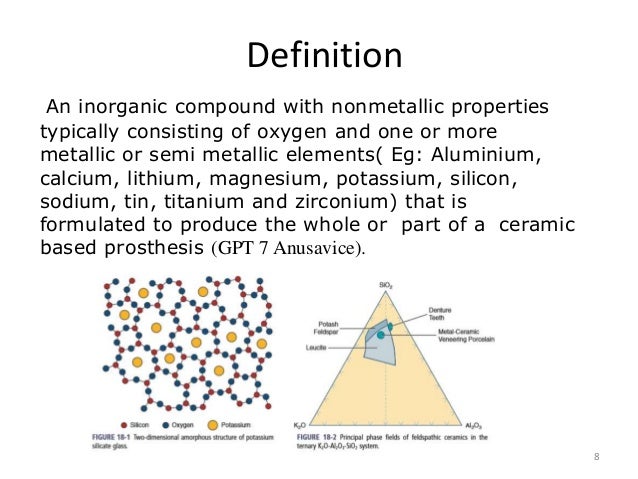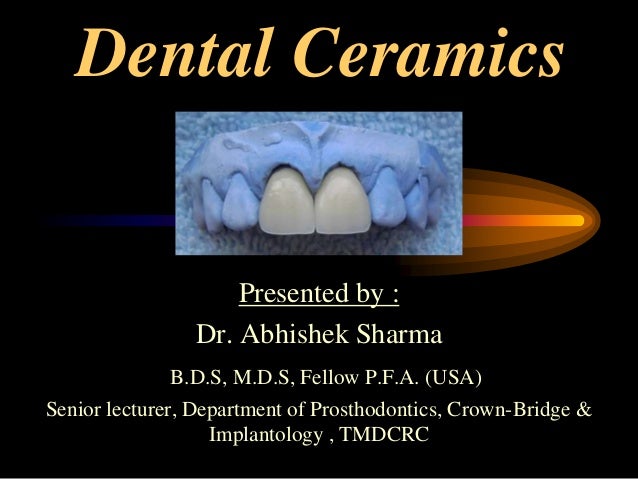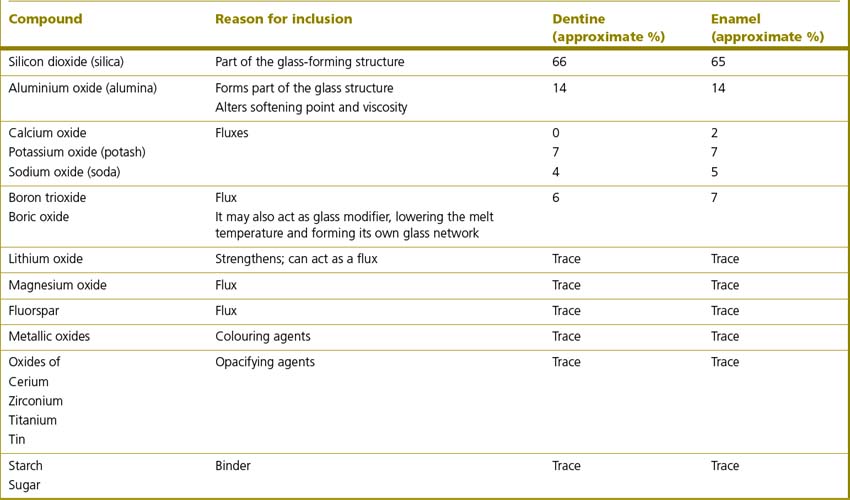The definition of ceramics refractories and glass 7 pottery 9 fluxes 14 classes of clay aluminous silicates 17 focus on dental ceramics 20 tooth structure review 20 issues facing ceramics as dental restorative materials 22 ceramic materials used in dental restorations 24 the alumina based systems 25 types of dental restorations 27.
Dental ceramics definition.
The detailed composition of dental ceramics was discussed in table 2.
Dental porcelain mainly differs from traditional ceramics in terms of firing techniques which make it more suitable for dental restoration.
Dental ceramics possesses very good resistance to the compressive stresses however they are very poor under tensile and shear stresses.
Ceramics is a material that is opaque and porous thus relatively weak.
Practical aspects are presented regarding the choice and use.
Introduction ceramic is defined as product made from non metallic material by firing at a high temperature.
Dental ceramics are mainly composed with crystalline minerals and glass matrix.
Dental ceramics synonyms dental ceramics pronunciation dental ceramics translation english dictionary definition of dental ceramics.
Congenital deformity resulting in lack of fusion of the soft and or hard palate either partial or complete.
Dental porcelain has very stable chemical properties and outstanding esthetics which are unlikely to be influenced by time.
See metals classification of.
Crystalline minerals include feldspar quartz and alumina and perhaps kaolin as glass matrix 1 10 11.
A ceramic material is an inorganic non metallic often crystalline oxide nitride or carbide material.
See definition under direct.
This imparts brittle nature to the ceramics and tend to fracture under tensile.
They withstand chemical erosion that occurs in other materials subjected to acidic or caustic environments.
Dental ceramics exhibit excellent biocompatibility with the oral soft tissues and are also chemically inert in oral cavity.
For certain dental prostheses such as three unit molars porcelain.
Dental porcelain also known as dental ceramic is a dental material used by dental technicians to create biocompatible lifelike dental restorations such as crowns bridges and veneers evidence suggests they are an effective material as they are biocompatible aesthetic insoluble and have a hardness of 7 on the mohs scale.




























